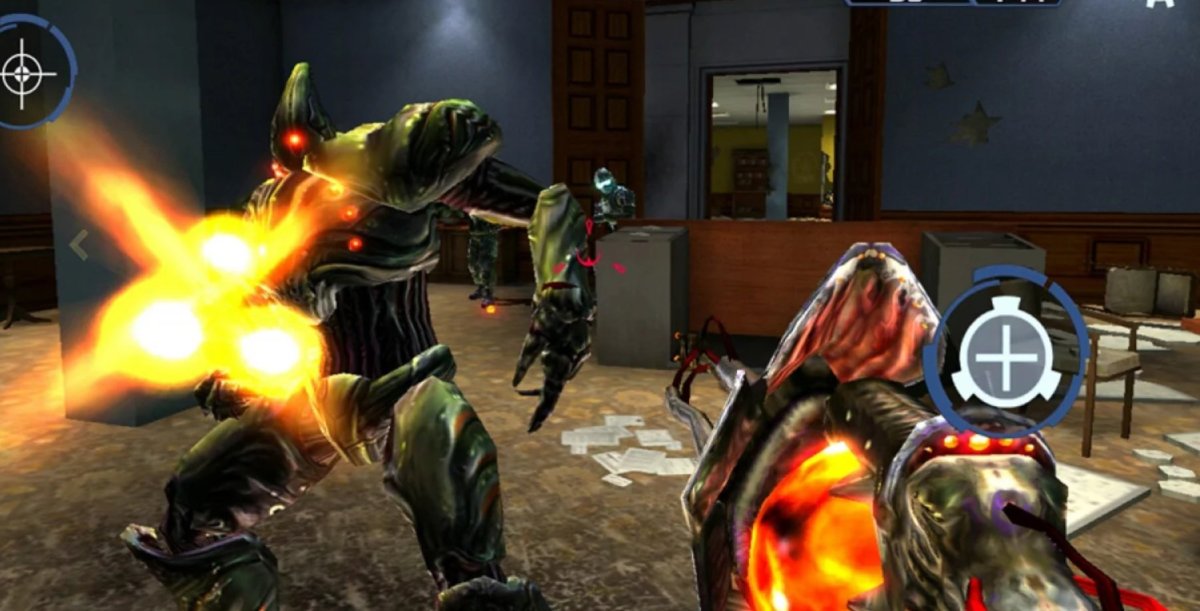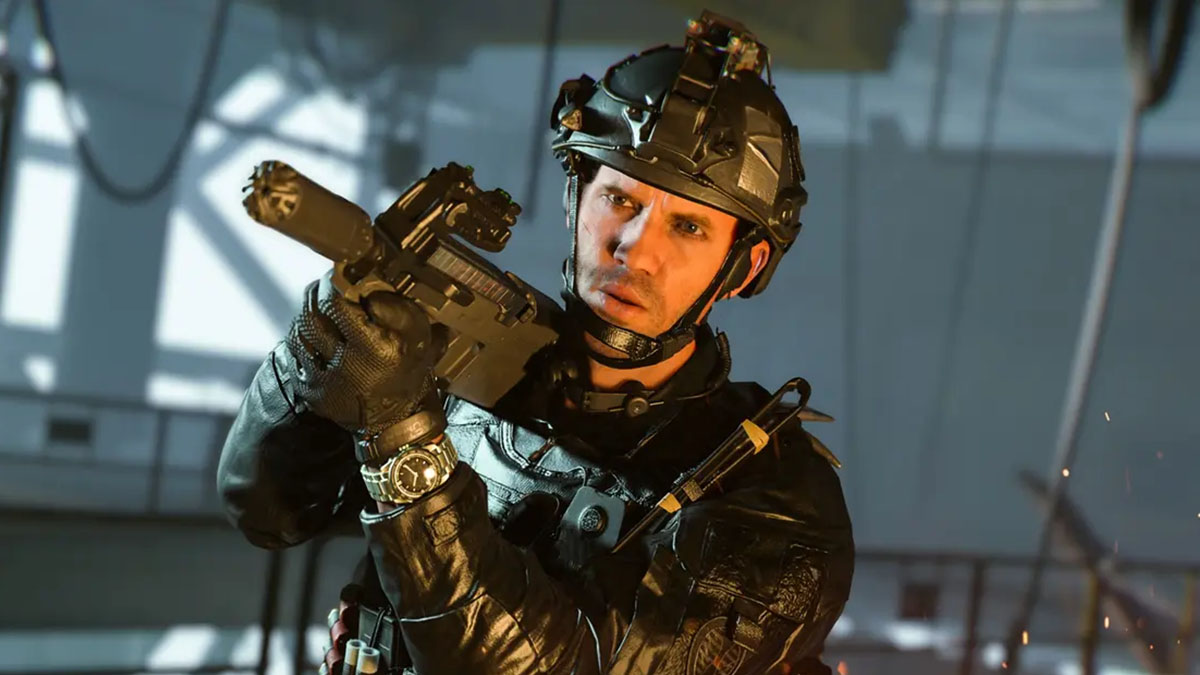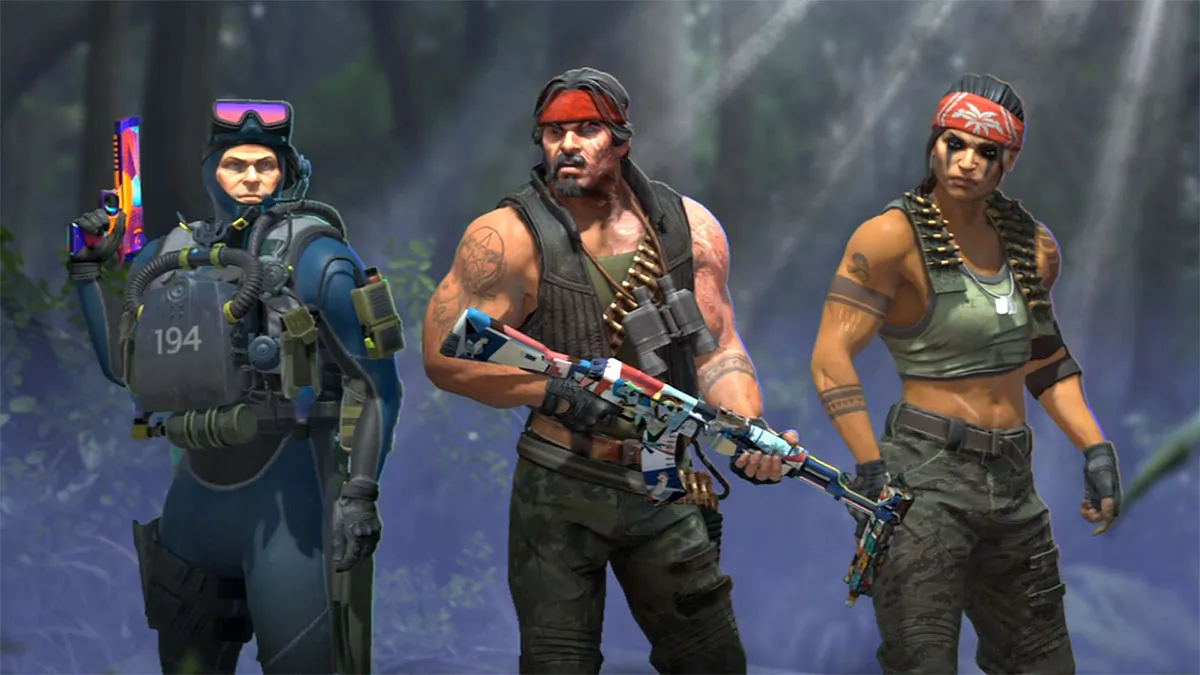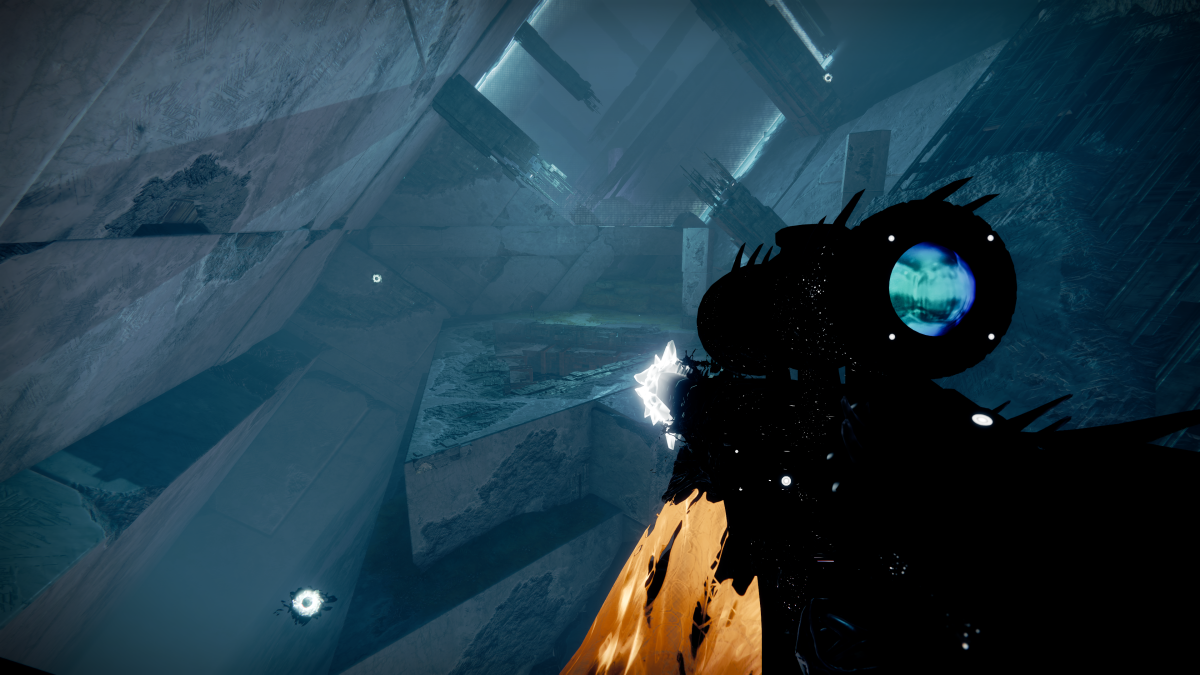The Conduit is a game with baggage.
After it was first announced last year, it quickly become a symbol to game-fans on either side of the “Wii divide”. Many people who hate the Wii want the game to fail in order to prove that “real games” can’t survive on a non-HD console. People who love the Wii want the game to succeed to prove that the Wii really is a “hardcore” system too, and not just for Nintendo fanboys and old people.
So, is The Conduit worth all the hype and fan-boy jousting? Matthew Razak and Jonathan Holmes are here with the straight dope, right after the jump.
The Conduit (Wii)
Developer: High Voltage Software
Publisher: Sega
Released: June 23, 2009
MSRP: $49.99
![]() Jonathan Holmes-
Jonathan Holmes-
The Conduit is a game about a secret spy who is working hard to stop a diabolical terrorist mastermind from committing crimes against humanity, who after some unforeseeable events, is forced to singlehandedly fight off an alien invasion (or at least, something like it). Cynics will immediately write off the game for ripping off GoldenEye and Halo in the same stroke, and in doing so, they’ll be missing out on all the other cool stuff that the The Conduit rips-off. Narrative themes from They Live, visual set pieces from War of the Worlds, and secret-government-cover-up-busted-by-rogue-operative-bad-ass heroics from 24 are all present. As different as those influences sound, they all blend together rather organically, making for a game scenario that is altogether familiar to fans of action sci-fi, but never offensively so.
It’s no Metal Gear Solid, but it’s a fun story. The cinemas feature some fairly big name voice-acting talent, including Never Cry Werewolf star Kevin Sorbo. Actually, Kevin is responsible for the worst of the acting by the game’s three man cast. The guy who plays Michael Ford (the protagonist) and Mr Adams (the old man who OMG SPOILERS might be a bad guy) do a much better job than Sorbo. Even more convincing than the main cast is the voice over work found on the various radios that pop up in-game, BioShock-style. These little audio-only vignettes are totally optional, but if you take the time to tune in to them, you’ll get to experience the most creepy and fun parts of The Conduit‘s narrative. Stuff like stories of survivors infected with a mysterious “bug” that appears to be lethal (especially to children), televangelists ranting about the alien Armageddon, and run-of-the-mill soldiers communicating about the hopelessness of their situation, all add a real life touch to the otherwise thoroughly Hollywood storyline.
More than the story, it was the constant roll out of new types of enemies and weapons that kept me glued to The Conduit. The game features standard human enemies who think generally like humans (they usually try to take cover first, then come looking for you if you hide for too long), little kamikaze alien jerks who die with one hit (but sometime explode upon impact), big ass alien beefcakes who come at you non-stop and can turn invisible at will, giant flying dragonfly looking aliens who toss grenades at you, little giggling aliens who sound like Gizmo from Gremlins, and the list goes on.
For every enemy there is in the game, there is a corresponding gun. You’ll start the game firmly embedded in the real world, fighting standard humans with regular, present day weaponry. From there, you move up to some Star Trek-style laser throwing cannons, and eventually into alien firepower that is often alive and wriggling in your hands. All guns have their own quirks and utilities, and though many of them will seem familiar to fans of the FPS genre, others will offer a few surprises. My favorite is probably “The Shrieker”, an alien gun that lobs explosives that the player can guide mid-air with pinpoint accuracy with a twist of the remote. This kind of stuff has been tried before, like the guided missiles of Metal Gear Solid and that super-fancy gun-thing from Resistance: Fall of Man, but directing your projectiles never felt as organic and effortless as it does in The Conduit, and that has everything to do with the controls. As you may already have guessed, the controls are the real star of The Conduit. They’re the real reason, some would say the only reason, to play The Conduit instead of another console FPS. Though everything about the game’s controls is customizable, I played the game from beginning to end on the default setting, and had more fun than I’ve ever had with another home console FPS. Keep in mind, home console FPSs are my least favorite genre of game going today, but that’s mostly because of the way they control. Ever since GoldenEye, I’ve hated FPS aiming with the analog stick. In The Conduit, aiming is always fun, which means the game itself is always fun, even when it doesn’t totally deserve to be (more on that later). Another plus to the game’s aiming system is that you can zoom-in sniper style at any time with any gun, though you can only fire while zoomed in with certain firearms. Maybe that doesn’t mean a lot to you, but as a sniping fan from way back, this option is a godsend.
If the controls are The Conduit‘s sexy leading man, then it’s ugly sidekick is probably the all seeing eye; ASE for short, as it is the other major thing that differentiates The Conduit from other FPSs. From it’s hyperbole-packed name, you’d think that the ASE was a pretty powerful piece of hardware, but in the end, it’s really just a flashlight. Using it when prompted does a lot to help the game from getting too repetitive. Most levels in single player campaign are paced between fire fights, and using the ASE to unlock doors, find secret passages, data disks, or defuse mines. It’s far from the most clever item/weapon I’ve seen in a videogame, but The Conduit is definitely better off for its inclusion.
Now for the stuff I was less than thrilled with; namely the games graphics, level designs, and the end-level climaxes. High Voltage uses a really cool texture mapping technique on everything in the game that is wet and/or shiny, which is great, because by some wild coincidence, tons of stuff in the game is wet and/or shiny looking. All the aliens, many of the armored human enemies, most of your guns, many of the environments, and the abundant, Giger-influenced alien tentacle/testicle architecture utilize this type of texture, and they all look fantastic, almost 360/PS3 quality. Everything else in the game; not so much. It’s actually pretty jarring to see so many PS3 looking characters existing in an often PS2-looking world. This inconsistency does work to make the aliens truly look like they don’t belong in the world around them (and therefore, more alien), but it can also be visually distracting, like the game is yelling at you “LOOK HOW SHINY MY ALIENS ARE”.
The level designs are also a mixed bag. Some areas, like the city streets and the airport-to-subway levels, feature a nice variety of open areas, tight quarters, and spots to use for hiding and sniping. Others, like the secret lab and the White House, are generally corridor-based affairs, with medium-sized rooms at the largest. There is still plenty of action in these levels, as well as ASE related stuff to do, but they’re still notably less dynamic and interesting than the other bits.
As for end-level climaxes, they aren’t all bad, but they’re generally forgettable. The ending of the game is particularly anti-climactic. It’s not the worst ending I’ve seen, but it’s not epic in any way, which is strange for a game that touts itself as “big screen, popcorn entertainment”. There are epic moments in The Conduit, but they often happen in the middle of the game, or smack dab in the middle of a level. I guess it makes things more unpredictable and less “videogame-y” to pace things that way, but if I didn’t want “videogame-y”, I wouldn’t be playing a videogame.
Then there’s the multi-player. It’s online, 12 player max, features Wii speak integration, and can be played in a a variety of different modes and environments. There are also a variety of different character skins available, so if you want to play as an alien or a CIA agent wearing a gas mask, you have that option. Though this is by far the most full featured and deep multi-player FPS on the Wii, it still pales compared to the modes and environments of Halo 3 or Killzone 2. Still, I’d rather play The Condiut than either of those two games, and again, that’s only because of the controls. I doubt current fans of home console FPSs will feel that way, but that’s not who I think the The Conduit was made for. This isn’t a game that’s trying to outdo other home console FPSs, but rather make a home console FPS for those who want to like the genre, but haven’t been able to up until now due to the way they control.
The Conduit, and it’s potential success or failure, shouldn’t be used as a gauge for how well “awesome hardcore” games sell on the Wii, mostly because the game isn’t all that hardcore, or even that awesome. In terms of graphics, level design, and even story, the game isn’t in the same league as comparable titles like the Metroid Prime series,or Resident Evil 4: Wii Edition. If The Conduit does sell well, it wont mean that hardcore games do or don’t sell on the Wii. All that will tell us is that a substantial amount of FPS-friendly Wii owners are willing to look past some game design mediocrity in order to play a fully featured online shooter that has very good controls and very shiny aliens.
You can count me amongst them.
Score: 7.0 — Good (7s are solid games that definitely have an audience. Might lack replay value, could be too short or there are some hard-to-ignore faults, but the experience is fun.)
 Matthew Razak-
Matthew Razak-
It’s hard for me to separate what The Conduit represents and how good a game it actually is, as I think the former directly affects my ideas on the latter. As Mr. Holmes has already discussed this isn’t God’s gift to the genre of the FPS, it’s not even Santa Clauses gift to the genre. I think the best way to sum up the overall quality of The Conduit is to say that if it were a game based on a movie (it’s plot pretty much is just from a bunch of different movies) we’d be pointing to it as a demonstration of how movie games can not suck. Hopefully, everyone is on the same page with me here when I say that. However, if I had to sum up what kind of building block this should be for FPS (and all games) on the Wii then I would be dropping names like Halo and Super Mario 64.
When I envisioned writing this review before playing the game in full I thought I’d be rambling on about how great the controls are, because they are. However, it’s hard to say anything about the controls in the game because they are exactly what you make them to be down to almost every single minute detail. Jonathan says he didn’t change much, but I found the turning speed to be a bit fast for me so I notched that down and popped my sensitivity up a bit. It took me a few tries to find what felt good, but once I got it it was easy to roll on in comfort. In short, the controls are your controls, and I can neither complain about them or applaud them as I have no interaction with how you will set them up. I can however applaud the simple fact that this amount of control depth even exists, because it is so important to making shooters on the Wii work. A word of warning though: don’t scratch your nose with your nunchuck hand while pointed at a wall, it often results in a grenade suicide if you have that set up for grenade throws.
So the controls are immensely polished because you can polish them immeasurably, but what about the stuff you can’t control? It’s more of a hit or miss bag there. The stories presentation is seriously lacking, with a lot of “deep thoughts” tossed in that have no real depth because the character development is non-existent. Jonathan mentioned that GoldenEye was a major influence, and I agree the shooter does have a very retro-FPS feeling to it. Part of that is the gameplay itself, which is all about duck and cover and run and gun, but part of that is because the entire story is delivered via text and voice-over. You never see anything outside of the underground tunnels and office buildings you find yourself in. There’s an alien invasion going on, but all you see is literally what you see, and not in the good way like Half-Life.
Speaking of those office buildings and underground tunnels, they’re actually the Washington DC Metro system and famous landmarks like the Pentagon and White House. I totally agree with Jonathan’s assessment that the levels looked pretty bland, but I have to give massive props to the guys at High Voltage for absolutely nailing the DC Metro system. As a resident of DC it’s infuriating that so much takes place here in movies and games and yet it never looks like the city I grew up in. Bravo to them for making the Metro look like the Metro.
Of course the other 99 percent of you could care less about this little factoid, however, it illustrates an important fact about the game. Most of the flaws, aside from a bit of repetitive level design, are not because High Voltage wasn’t paying attention to details, but because the Wii must be getting destroyed by the stuff the the game is doing so well. Guns, enemies and important objects look stellar. The enemy AI is spot on, the amount of bad guys on the screen at once is never lacking and I didn’t once experience a frame rate drop. It is a testament to what can be done on the Wii, but brings me back to the problem of whether I’m giving it too much credit simply because it does things that should be done in every game.
I can tell you where I won’t give any credit, and that is in the music. One never really realizes how important well cued and appropriate music is until you run into a game that doesn’t have it. Music cues throughout the game were oddly placed or didn’t make much sense at all, and the overall score was severely lacking. Luckily you’re too busy taking out a variety of bad guys who attack with pretty logical strategy at a constant pace. The game is fun, plain and simple, no matter how odd the soundtrack.
Jonathan discussed the game’s enemies and the variety of well designed weapons already, but I’d like to point out that the game does some very interesting things with a plethora of different weapons and you never get that feeling that you’re just using the same weapon over and over because it’s the best. Often FPS games turn into you shooting one gun throughout each level because it is clearly the best, but not here. The devs did a great job of making each weapon useful and worthwhile — except the rocket launcher, those are always disappointing in any game.
I found the ASE sadly underused. The item has potential and could have really separated the gameplay from other FPS, but it’s mostly relegated to finding hidden objects and detecting landmines. When I first saw the ASE in action I thought it was a great opportunity to force the player to decide between guns and safety. However, the game never really combines the two as much as I would have liked, relegating the two modes of gameplay into separate parts instead of a cohesive whole. It’s one of those missed opportunities in a good game that makes you desperately want a sequel to see how they could improve on it.
The online is fantastic and robust for the Wii. I hate tacking on “for the Wii” to the end of sentences so let’s take it out of that context. The online is fun and simple. There, that seems much better and far less qualified. There are plenty of games out there with far more in depth online rosters, that have massively larger levels and more gameplay options. In fact that’s almost all there is out there now. The Conduit‘s online is like stepping into a time-warp and playing GoldenEye online with better controls and more variety of weapons. The levels are smaller and more enclosed, the shooting is frantic and there isn’t any ass on there whose been playing the game for the past four years everyday and can take you out in a nanosecond every time you respawn. It’s actually pretty refreshing to go back and play what feels like an old school shooter, and the easy to understand controls also give it that same universal appeal that GoldenEye had. It’s good, you’ll have fun, and you won’t be confused. (As a side note, I picked up Wii Speak to play with this game and that things is pretty darn cool. I wish more people had it, though.)
Is The Conduit disappointing? No, not at all. I think it turned out to be exactly what we all thought it was going to be: a well executed Wii FPS with some ups and downs that’s fun to play. Oh, and in case you were wondering about the game’s replay value and I accidentally erased my 80 percent completed game and had to play through it twice. It was still fun.
Score: 7.0 — Good (7s are solid games that definitely have an audience. Might lack replay value, could be too short or there are some hard-to-ignore faults, but the experience is fun.)
Total Score: 7.0 — Good (7s are solid games that definitely have an audience. Might lack replay value, could be too short or there are some hard-to-ignore faults, but the experience is fun.)





